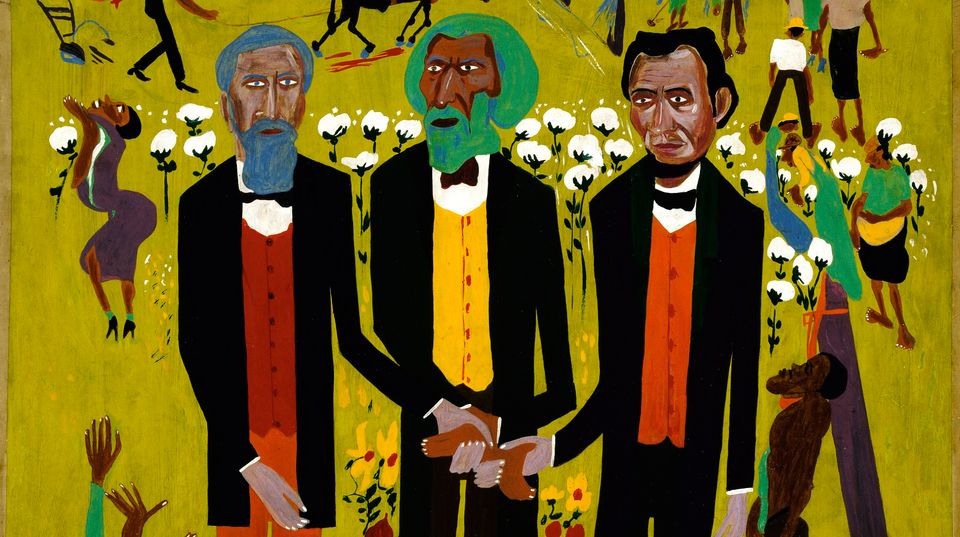The Smithsonian American Art Museum (SAAM) is currently showcasing William H. Johnson’s “Fighters for Freedom” Collection, a series of portraits and vignettes painted in the 1940s as a tribute to African American activists, scientists, teachers, and performers as well as international leaders working to bring peace to the world.
For the first time since 1946, all 34 paintings in Johnson’s vibrant series have been on display as part of a tour of various art museums around the United States. This special tour also marks the first time all of the images in “Fighters for Freedom” will be shown together as a single body of work. The tour, which began in Charleston, South Carolina’s Gibbes Museum of Art in January 2022, has made a total of six stops over the past two years. Following its stay at SAAM, which ends on September 8th, the collection will travel to the Patricia and Phillip Frost Art Museum in Miami for its seventh and final stop.
“During the 1940s, the images of African Americans were often negative. A collection of racist stereotypes intended to minimize Black people and rob them of their humanity,” Lonnie G. Bunch III, the 14th Secretary of the Smithsonian Institution, said. “Johnson offered an important counternarrative. Showing how much African Americans have contributed to the nation’s history and to the nation’s character.”
Johnson’s ‘Fighters for Freedom’ series uses art to tell Black American history. In addition to portraits of historical figures, Johnson dotted the background of each illustration with small flags, buildings, and important vignettes to show the time each fighter was living through and their achievements. The colorful canvases showcase scenes of prominent people of the past and evocative scenes of important moments in the quest for equality and justice.
Johnson began work on “Fighters for Freedom” at the end of World War II, compelled/inspired by the recent fight for freedom across the globe. His paintings cover a range of Black American history, from the death of Crispus Attucks during the Revolutionary War to the abolitionist movement to modern figures at the time Johnson was creating his work in the 1940s. Observers will recognize some well-known freedom fighters in his paintings, such as Marian Anderson, George Washington Carver, and Harriet Tubman. Johnson also painted some lesser-known activists like educator Nannie Helen Burroughs and composer William Grant Still in his artwork.
The Smithsonian tour is a tribute to these Black heroes as well as a tribute to Johnsons himself
Johnson was born in 1901 to poor African American parents in South Carolina. He moved to New York City at the age of 17 where he worked odd jobs, saving to go to study at the National Academy of Design. Johnson later traveled to France in the 1920s to study modernism before returning to the United States and enjoying moderate success at the peak of the Harlem Renaissance. Following his wife’s death in 1944, Johnson became a recluse and spent the last 20 years of his life in a state hospital on Long Island, New York, passing away in 1970. After his death, his entire life’s work was almost disposed of to save storage fees, but it was rescued by friends at the last moment. Over a thousand paintings by Johnson are now part of the collection of the Smithsonian Institution’s Smithsonian American Art Museum.
80 years after Johnson completed this work, his paintings and the figures profiled continue to be significant and shape the society we live in today.
“Stories like these are as vital today as they have been because the struggle for freedom continues. It is a perpetual struggle,” Bunch shared.“They spark curiosity about who we are, where we come from, and what our future might look like.”
Cover Photo: William H. Johnson, Three Great Abolitionists: A. Lincoln, F. Douglass, J. Brown, ca. 1945, oil on paperboard, Smithsonian American Art Museum, Gift of the Harmon Foundation, 1983.95.51

